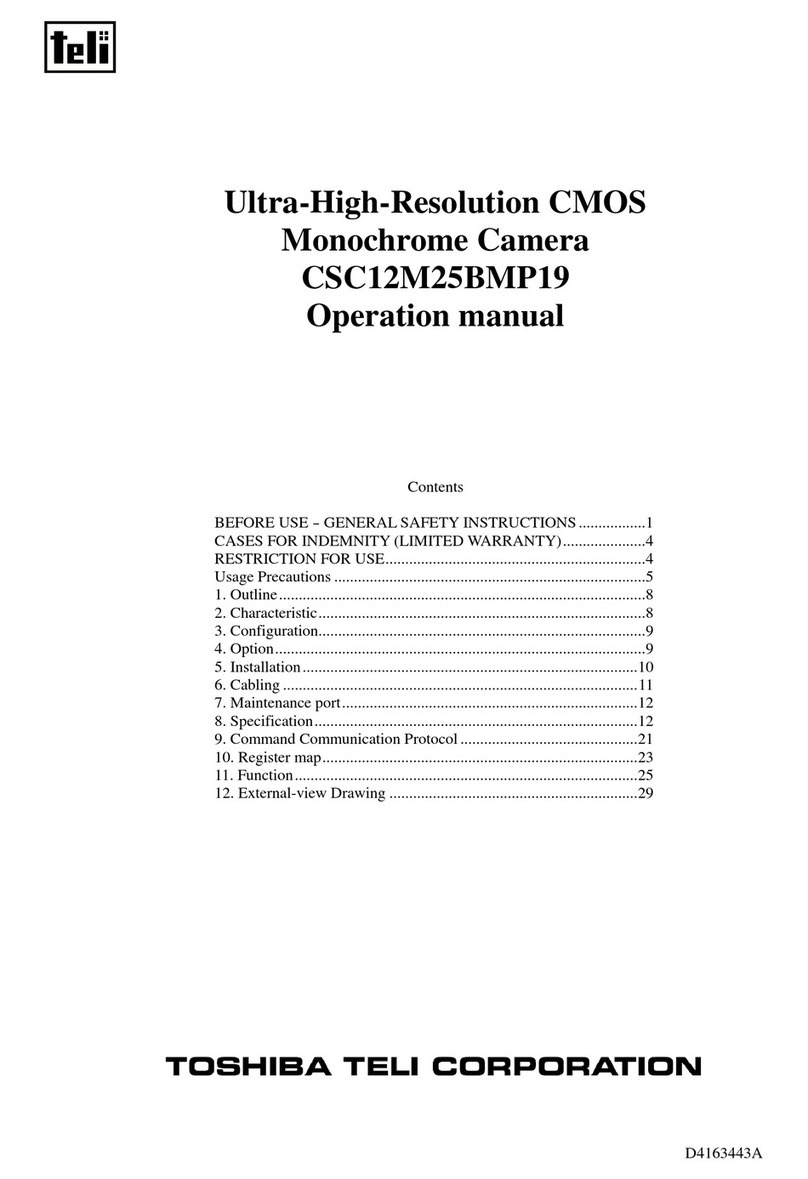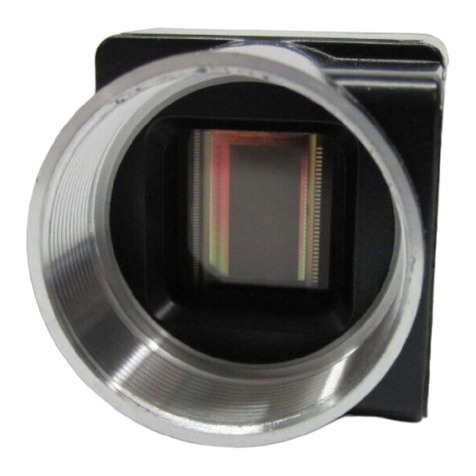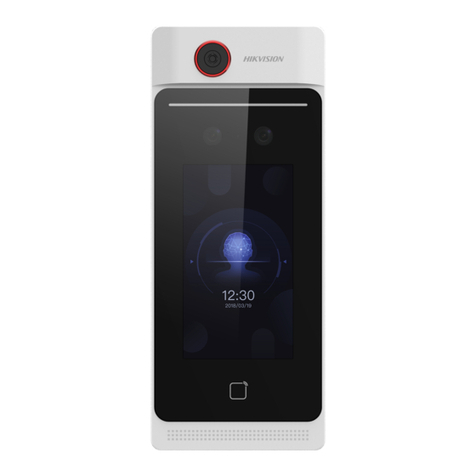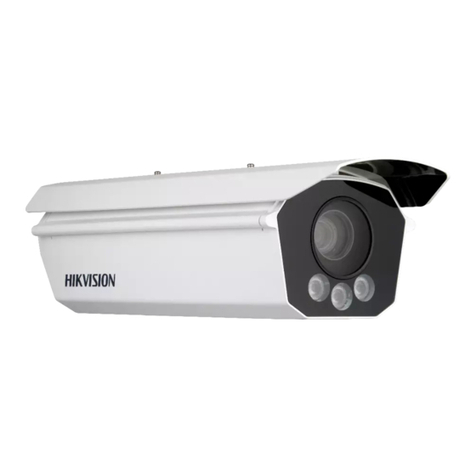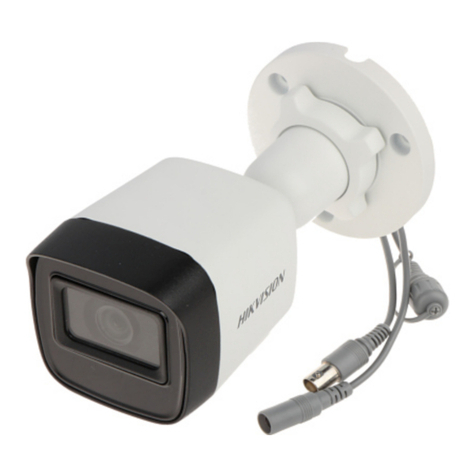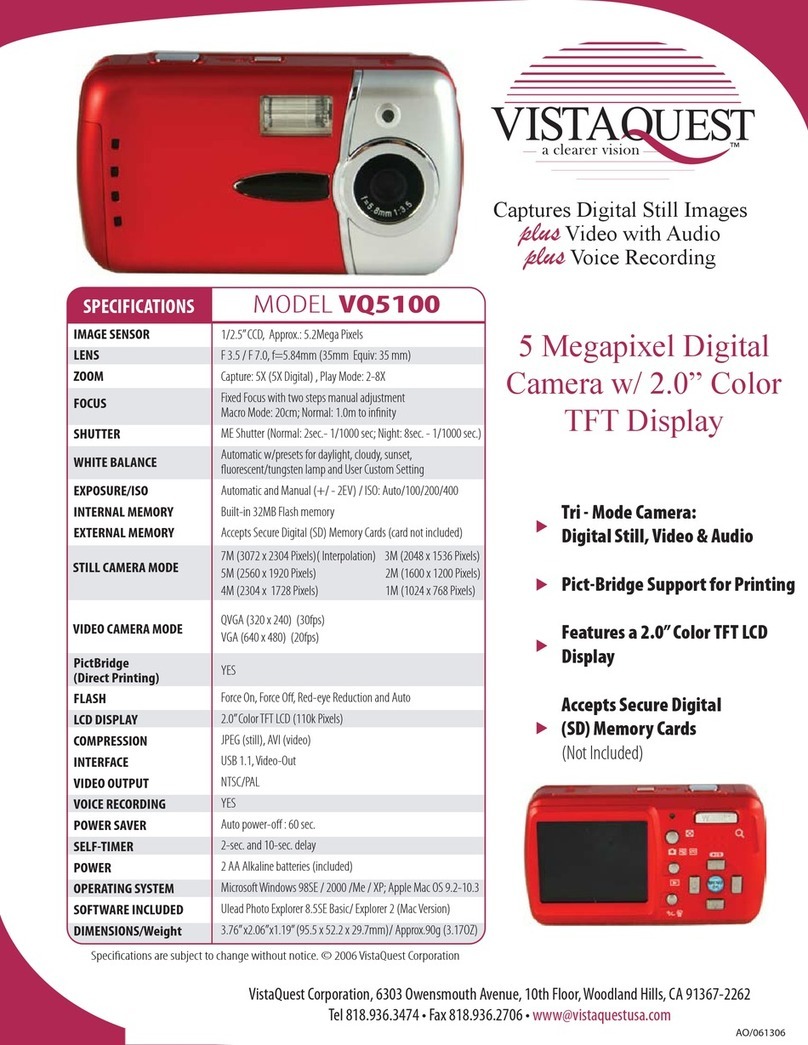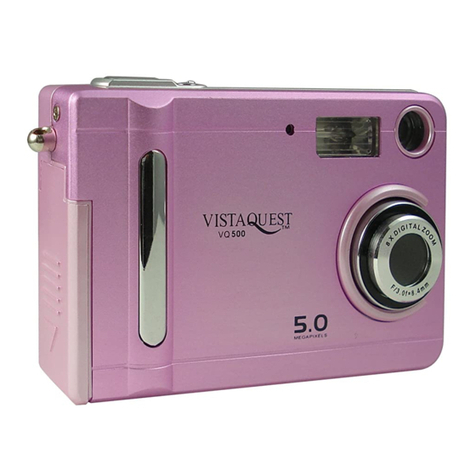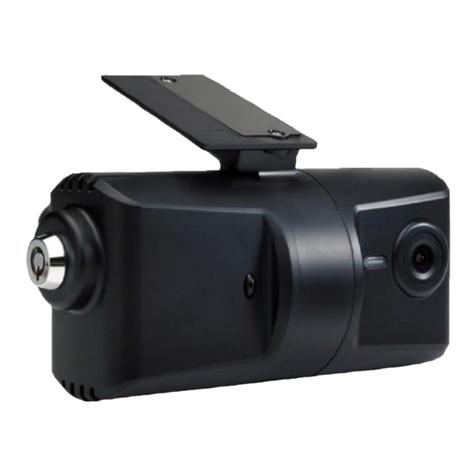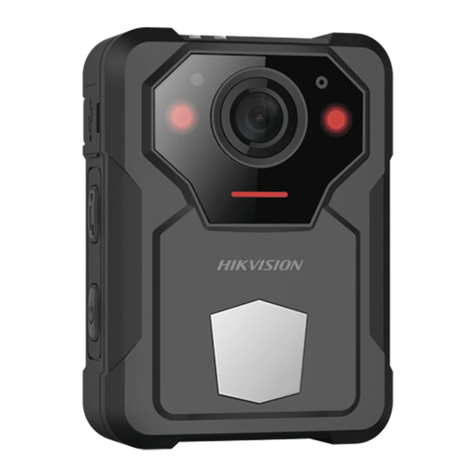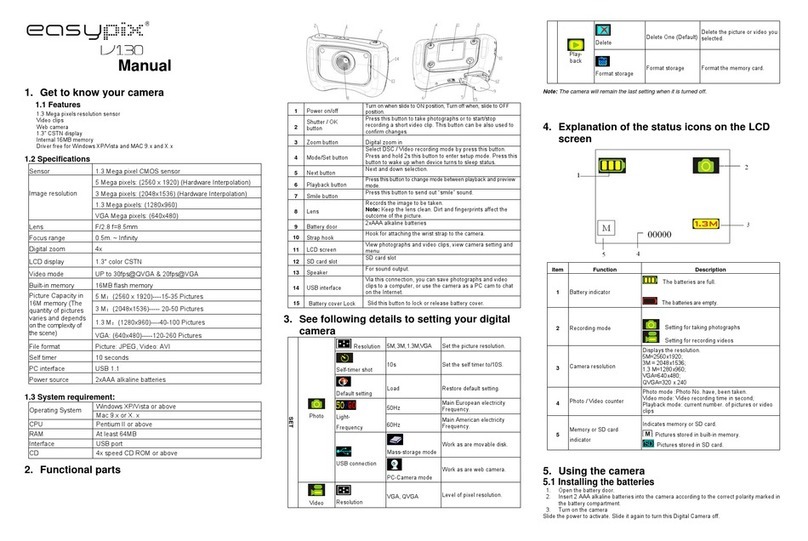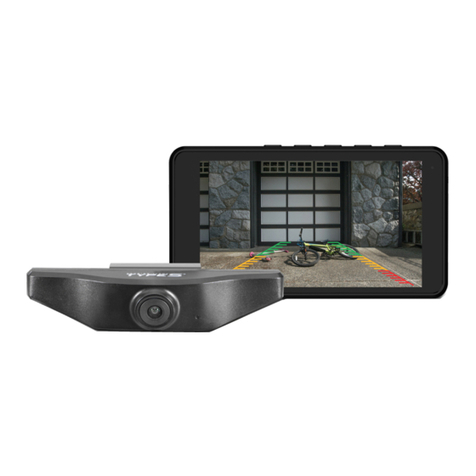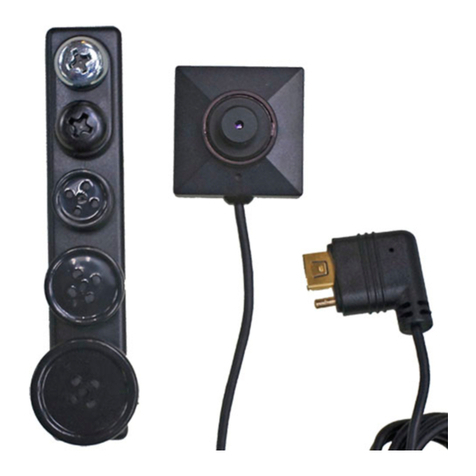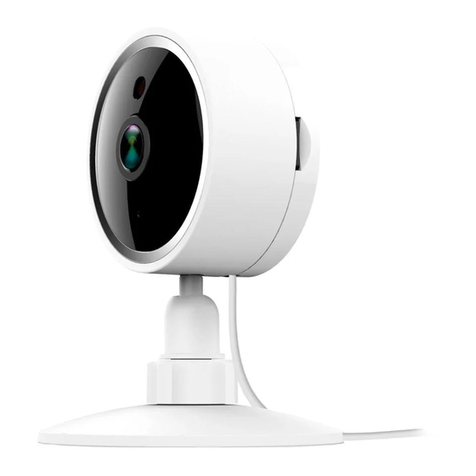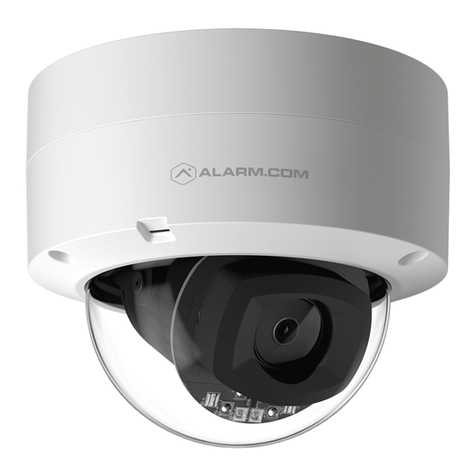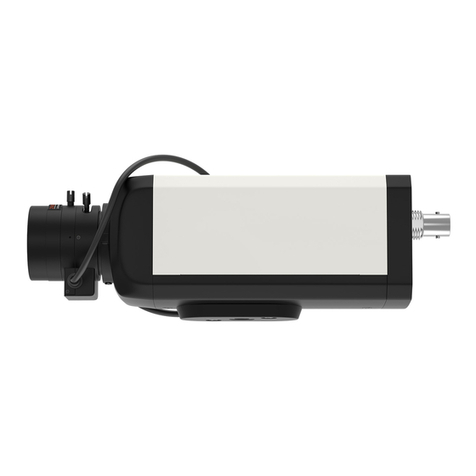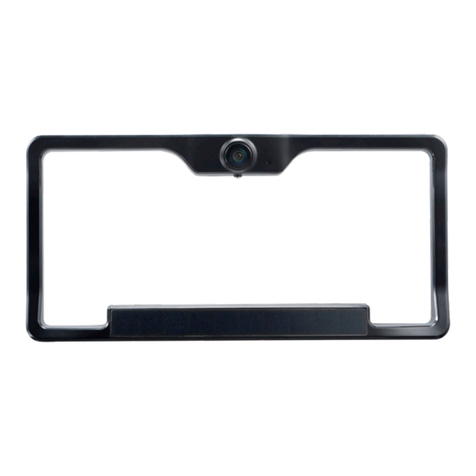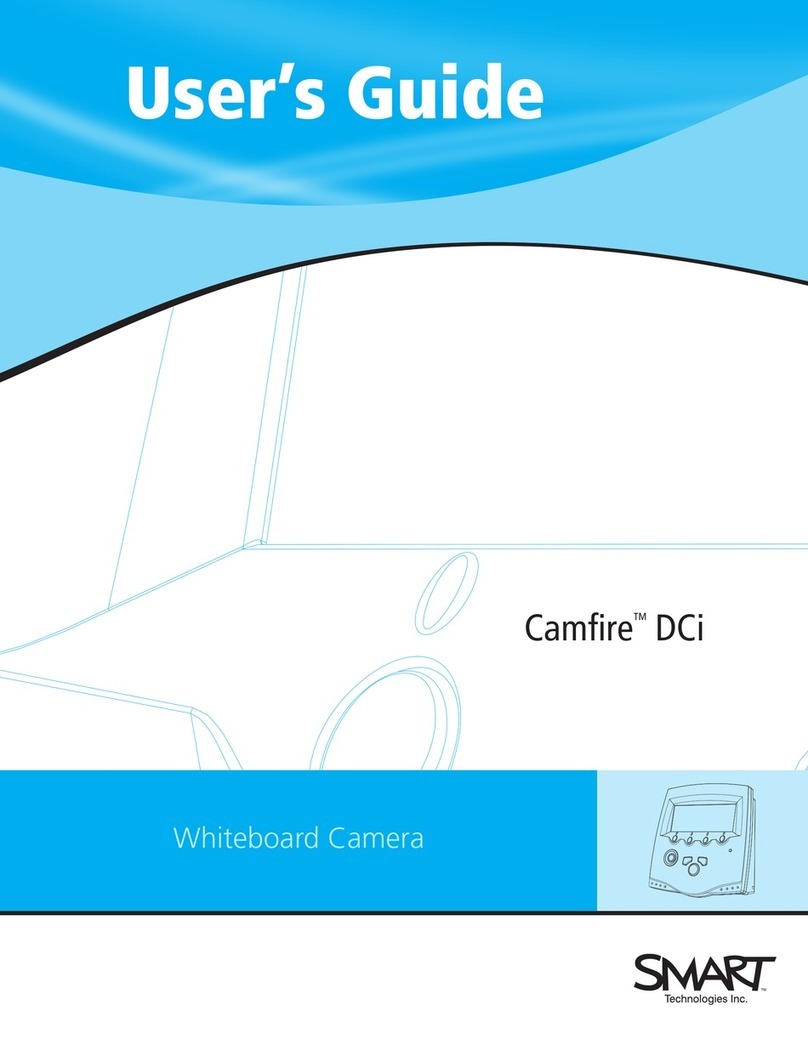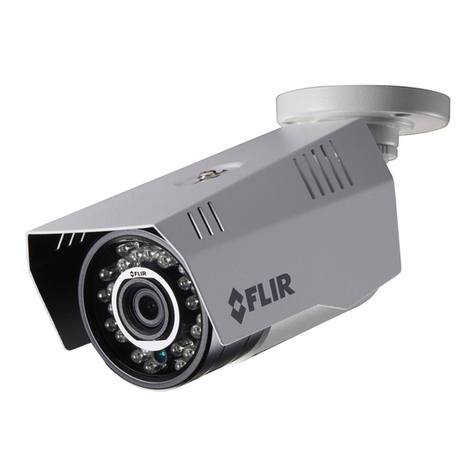Toshiba teli DU657MC User manual

1 D4241118D
Copyright © 2015 TOSHIBA TELI CORPORATION, All rights reserved. http://www.toshiba-teli.co.jp/en/index.htm
Contents
RESTRICTION FOR USE.....................................................................................................................................1
CASES FOR INDEMNITY (LIMITED WARRANTY).........................................................................................2
USAGE PRECAUTIONS.......................................................................................................................................3
1. Overview .........................................................................................................................................................5
2. Features...........................................................................................................................................................5
3. Configuration.................................................................................................................................................7
4. Optional part ..................................................................................................................................................7
5. Functions........................................................................................................................................................8
6. Specifications..............................................................................................................................................16
7. Timing chart.................................................................................................................................................24
8. Warranty rules.............................................................................................................................................26
9. Repair.............................................................................................................................................................27
10. Outline Drawing...........................................................................................................................................28

1 D4241118D
Copyright © 2015 TOSHIBA TELI CORPORATION, All rights reserved. http://www.toshiba-teli.co.jp/en/index.htm
RESTRICTION FOR USE
Should the equipment be used in the following conditions or environments, give consideration to
safety measures and inform us of such usage:
(1) Use of the equipment in the conditions or environment contrary to those specified, or use outdoors.
(2) Use of the equipment in applications expected to cause potential hazard to people or property,
which require special safety measures to be adopted.
This product can be used under diverse operating conditions. Determination of applicability of
equipment or devices concerned shall be determined after analysis or testing as necessary by the
designer of such equipment or devices, or personnel related to the specifications. Such designer or
personnel shall assure the performance and safety of the equipment or devices.
This product is not designed or manufactured to be used for control of equipment directly concerned
with human life (*1) or equipment relating to maintenance of public services/functions involving factors
of safety (*2). Therefore, the product shall not be used for such applications.
(*1): Equipment directly concerned with human life refers to.
- Medical equipment such as life-support systems, equipment for operating theaters.
- Exhaust control equipment for exhaust gases such as toxic fumes or smoke.
- Equipment mandatory to be installed by various laws and regulations such as the Fire Act or
Building Standard Law
- Equipment related to the above
(*2) :Equipment relating to maintenance of public services/functions involving factors of safety refers
to.
- Traffic control systems for air transportation, railways, roads, or marine transportation
- Equipment for nuclear power generation
- Equipment related to the above

2 D4241118D
Copyright © 2015 TOSHIBA TELI CORPORATION, All rights reserved. http://www.toshiba-teli.co.jp/en/index.htm
CASES FOR INDEMNITY (LIMITED WARRANTY)
We shall be exempted from taking responsibility and held harmless for damage or losses incurred by the
user in the following cases.
Natural disasters, such as an earthquake and thunder, fire or any other act of God; acts by third
parties; misuse by the user, whether intentional or accidental; use under extreme operating conditions.
In the case of indirect, additional, consequential damages (loss of business interests, suspension of
business activities) are incurred as result of malfunction or non-function of the equipment, we shall be
exempted from responsibility for such damages.
In the case damage or losses are caused by failure to observe the information contained in the
instructions in this instruction manual and specifications.
In the case damage or losses are caused by use contrary to the instructions in this instruction manual
and specifications.
In the case damage or losses are caused by malfunction or other problems resulting from use of
equipment or software that is not specified.
In the case damage or losses are caused by repair or modification conducted by the customer or any
unauthorized third party (such as an unauthorized service representative).
Expenses we bear on this product shall be limited to the individual price of the product.
The item that is not described in specifications of this product is off the subject of the guarantee.
The attachment mistake of a cable.

3 D4241118D
Copyright © 2015 TOSHIBA TELI CORPORATION, All rights reserved. http://www.toshiba-teli.co.jp/en/index.htm
USAGE PRECAUTIONS
Handle carefully
Do not drop the equipment or allow it to be subject to strong impact or vibration, as such action may
cause malfunctions. Further, do not damage the connection cable, since this may cause wire
breakage.
Environmental operating conditions
Do not use the product in locations where the ambient temperature or humidity exceeds the
specifications.
Otherwise, image quality may be degraded or internal components may be adversely affected. In
particular, do not use the product in areas exposed to direct sunlight.
Combination of C-mount lens
Depending on the lens you use, the performance of the camera may not be brought out fully due to
the deterioration in resolution and brightness in the peripheral area, occurrence of a ghost,
aberration and others. When you check the combination between the lens and camera, be sure to
use the lens you actually use.
When installing a lens in the camera, make sure carefully that it is not tilted.
In addition, use a mounting screw free from defects and dirt. Otherwise, the camera may be unable
to be removed.
As for the C-mount lens used combining this product, the projection distance from bottom of the
screw should use 8.0mm or less.
8.0mm or less
C-mount lens
Bottom of
the screw
Mounting to a pedestal
When mounting this product to a pedestal, make sure carefully that the lens doesn't touch with the
pedestal.
Do not expose the camera’s image-pickup-plane to sunlight or other intense light directly.
Its inner CMOS sensor might be damaged.
Occurrence of moiré
If you shoot thin stripe patterns, moiré patterns (interference fringes) may appear. This is not a
malfunction.
Occurrence of noise on the screen
If an intense magnetic or electromagnetic field is generated near the camera or connection cable,
noise may be generated on the screen. If this occurs, move the camera or the cable.

4 D4241118D
Copyright © 2015 TOSHIBA TELI CORPORATION, All rights reserved. http://www.toshiba-teli.co.jp/en/index.htm
USAGE PRECAUTIONS
Handling of the protective cap
If the camera is not in use, attach the lens cap to the camera to protect the image pickup surface.
If the equipment is not to be used for a long duration
Turn off power to the camera for safety.
Maintenance
Turn off power to the equipment and wipe it with a dry cloth.
If it becomes severely contaminated, gently wipe the affected areas with a soft cloth dampened with
diluted neutral detergent. Never use alcohol, benzene, thinner, or other chemicals because such
chemicals may damage or discolor the paint and indications.
If the image pickup surface becomes dusty, contaminated, or scratched, consult your sales
representative.
Disposal
When disposing of the camera, it may be necessary to disassemble it into separate parts, in
accordance with the laws and regulations of your country and/or municipality concerning
environmental contamination.
[Phenomena specific to CMOS sensor]
“This symbol is applicable for EU member states only”
Defective pixels
A CMOS image sensor is composed of photo sensor pixels in a square grid array. Due to
the characteristics of CMOS image sensors, over- or under-driving of the pixels results in
temporary white or black areas (as if these are noises) appearing on the screen. This
phenomenon, which is not a defect is exacerbated under higher temperatures and long
exposure time.
Image shading
The brightness of the upper part of the screen may be different from that of the lower part. Note
that this is a characteristic of a CMOS image sensor and is not a fault.

5 D4241118D
Copyright © 2015 TOSHIBA TELI CORPORATION, All rights reserved. http://www.toshiba-teli.co.jp/en/index.htm
1. Overview
This camera is a High-resolution CMOS camera employing the CMOS sensor which has 6.55Mega
pixels readout system. Suffix [C] is attached to the color models. For video output and camera control,
the USB 3.0 interface standard is adopted for high transfer rate, and it is easy to integrate into
industrial equipment.
2. Features
2.1 High speed output at High-resolution pixel
The TOSHIBA TELI proprietary 1.1 type 6.55Mega pixels High-resolution CMOS sensor outputs
the entire 6.55Mega pixels in a speed as high as maximum 55fps.
2.2 Global shutter
As it employs a global electronic shutter similar to a CCD image sensor, clear images of even
fast-moving object are obtainable with less blur.
2.3 USB* 3.0 interface
Video output and camera control are performed via the USB 3.0 standard interface. Data transfer
is up to 5Gbps (Maximum) that enables to output uncompressed video data at high frame rate.
2.4 USB3 Vision*
This product is based on USB3 Vision Ver.1.0.
2.5 GenICam* Ver.2.3
This product is based on GenICam Generic Interface for Cameras Ver.2.3.
2.6 IIDC2* Digital Camera Control Specification Ver.1.0.0
This product is based on IIDC2 Digital Camera Control Specification Ver.1.0.0.
2.7 e-CON* Connector adoption
The e-CON connector adoption enables to assemble the cable easily without using special tools.

6 D4241118D
Copyright © 2015 TOSHIBA TELI CORPORATION, All rights reserved. http://www.toshiba-teli.co.jp/en/index.htm
2.8 Random Trigger Shutter
The Random Trigger Shutter function provides images in any timing by input of an external trigger
signal. Trigger control from PC is available as well.
2.9 Scalable
Selectable video output area. This mode achieves higher frame rate by reducing vertical output
area. And reduces occupied data rate of USB bus by reducing horizontal output area.
2.10 Binning mode
The binning readout function can output the entire pixels for valid area formatted 1,280(H) x 1,280
(V) or 640(V) x 640(V) pixels without changing the original camera view by reading 2(H) x 2(V) or
4(H) x 4(V) pixels as one pixel.
2.11 Color processing
Color models have built in color processing. Color processing features like white balance are
available in Bayer output mode.
2.12 Compact and lightweight
This camera is compact and lightweight; it is easy to integrate into industrial equipment.
2.13 EU RoHS & China RoHS
* USB is a unified standard established by USB-IF(USB Implementers Forum).
* USB3 Vision is a unified standard established by AIA (Automated Imaging Association).
* GenICam is a registered trademark of EMVA (European Machine Vision Association).
* IIDC2 is a unified standard established by JIIA (Japan Industrial Association).
* e-CON (Easy & Economy connector) is a sensor connector that is normalized by the
manufacturer of the sensor, FA equipment and connector.

7 D4241118D
Copyright © 2015 TOSHIBA TELI CORPORATION, All rights reserved. http://www.toshiba-teli.co.jp/en/index.htm
3. Configuration
(1) Camera body
* No application software and manuals are attached to this camera.
4. Optional part
- Camera mounting kit Model name: CPTC6M
* Contact your dealer / distributor for details of option units.

8 D4241118D
Copyright © 2015 TOSHIBA TELI CORPORATION, All rights reserved. http://www.toshiba-teli.co.jp/en/index.htm
5. Functions
5.1 Gain
Manual gain control can be set from 1 to 8 times.
Notes on gain setting:
Setting the gain value too high increases noises. When you adjust the brightness of the image, I ask
you to have final image quality checked with your environment.
5.2 Black Level
Black level is adjustable from -25% to +25% as white saturation level is 100%.
5.3 Gamma
Gamma correction curve is adjustable from 0.45 to 1.
5.4 LUT (Look up Table)
Arbitrary curve and binarization are possible by using 10 bit input and 10 bit output LUT.
5.5 Exposure Time
Manual exposure time control is available. Exposure time is adjustable by the internal sync signal.
5.6 White balance
Color models have two white balance modes, manual white balance (MWB) and one-push auto white
balance (OPWB). Select the mode to suit the subject and purpose.
5.6.1 MWB
R/B gain can be set independently.
5.6.2 OPWB
When OPWB is executed, the camera adjusts R/B gain automatically.

9 D4241118D
Copyright © 2015 TOSHIBA TELI CORPORATION, All rights reserved. http://www.toshiba-teli.co.jp/en/index.htm
5.7 Random Trigger Shutter
An image is captured at the desired timing using trigger signal input. External trigger signal from
trigger input connector and software trigger from control command via the USB 3.0 interface are
available (Edge mode / Bulk mode). Trigger polarity is selectable (High active / Low active).
Note that Random Trigger Shutter will cause a delay between trigger signal and start of exposure.
See 7. Timing Chart for detail.
- Edge mode (TriggerSequence0)
The exposure time is determined by Exposure Time setting.
Image
USB bus
Exposure
Trigger
ExposureTime
- Level mode (TriggerSequence1)
The exposure time is determined by the pulse width of the trigger signal.
USB bus
Exposure
Trigger
Pulse Width
Image
- Bulk mode (TriggerSequence6)
Camera exposes and transfers multiple frames by a single trigger.
Image
USB bus
Exposure
Trigger
ExposureTime
Image Image
TriggerAdditionalParameter = 3
Notes on Random Trigger Shutter mode:
- In the period when FRAME_TRIGGER_WAIT signal is inactive, user must not input external trigger
signal to this camera.
- When the interval of the input trigger signal is extremely short, or when the trigger signal is noisy,
there is a possibility of causing the malfunction. In this case, please input a proper trigger signal.

10 D4241118D
Copyright © 2015 TOSHIBA TELI CORPORATION, All rights reserved. http://www.toshiba-teli.co.jp/en/index.htm
5.8 Sequential Shutter
Sequential Shutter function performs sequential capturing with applying the settings of UserSet that
have been made entry in advance.
ExposureTime = 10ms
...
Sensor
Frame
Exposure
ExposureTime = 2ms
... ExposureTime = 20ms
...
USB Bus
Exposure1
Frame1
ExposureTime = 10ms
...
Frame2 Frame3 Frame4
Sequence
Index = 1
SequentialShutterTerminateAt = 3
...
...
Exposure2 Exposure3 Exposure4
Sequence
Index = 2 Sequence
Index = 3 Sequence
Index = 1
Entry1 = UserSet1 Entry2 = UserSet4 Entry3 = UserSet2 Entry1 = UserSet1
Note on Sequential Shutter:
- In Sequential Shutter mode, window size is unchangeable.
5.9 Trigger Delay
You can add the delay between trigger signal input and the start of exposure.
USB bus
Exposure
Trigger signal
Image
TriggerDelay

11 D4241118D
Copyright © 2015 TOSHIBA TELI CORPORATION, All rights reserved. http://www.toshiba-teli.co.jp/en/index.htm
5.10 Event
Camera notifies FrameTrigger status and other information by USB3 Vision Event Packet.
- FrameTrigger : Reception of Frame Start Trigger
- FrameTriggerError : Rejection of Frame Start Trigger
- FrameTriggerWait : Start of waiting for Frame Start Trigger
- FrameTransferStart : Start of transferring streaming data
- FrameTransferEnd : End of transferring streaming data
- ExposureStart : Start of Exposure
- ExposureEnd : End of Exposure
- Timer0Start : Start of Timer0
- Timer0End : End of Timer0
Events timing are as following chart.
A B C D E
A B C
Overlap Trigger Reception
A B C
(1)
(6) (7) (6) (7) (6) (7)
(1) (1)
(4) (5) (4) (5) (4) (5)
(3) (3) (3)
FrameTriggerWait will be activated before
approx. (Sensor Read Out End - Exposure Time)
D E
D E
(6) (7)
(1)
(4) (5) (4)
(3)
(2) (1)
(6) (7)
This trigger is
ignored.
Overlap Trigger Rejection
Event Name
FrameTriggerWait
(Low Active)
EXT_TRIG
(Falling edge)
Exposure
Sensor Read Out
Bus Transfer
Timer0Active
(Low Active)
(8) (9) (8) (9) (8) (9) (8) (9) (8) (9)
(3) FrameTriggerWait
(4) FrameTransferStart
(5) FrameTransferEnd
(6) ExposureStart
(7) ExposureEnd
(1) FrameTrigger
(2) FrameTriggerError
(8) Timer0Start
(9) Timer0End
: Reception of Frame Start Trigger.
: Rejection of Frame Start Trigger.
: Start of waiting for Frame Start Trigger.
: Start of transferring streaming data.
: End of transferring streaming data.
: Start of Exposure.
: End of Exposure.
: Start of Timer0.
: End of Timer0.

12 D4241118D
Copyright © 2015 TOSHIBA TELI CORPORATION, All rights reserved. http://www.toshiba-teli.co.jp/en/index.htm
5.11 GPIO
Selected signals are output from GPIO pins of I/O connector. Following signals are selectable.
Output signal is 5V CMOS.
TIMER0 ACTIVE : This signal can be used as strobe control signal.
The delay time and pulse width of this signal are configurable.
USER OUTPUT : Level selectable user output by register setting.
EXPOSURE ACTIVE : Period from exposure start to end.
FRAME ACTIVE : Period from exposure start to the CMOS transfer completion.
FRAME TRANSFER : Period of transferring image data on USB bus.
FRAME TRIGGER WAIT : Indicating waiting a Random Trigger Shutter.
An External trigger is input during this period,
exposure starts immediately.
EXT_TRIG
Exposure
VD
CMOS Transfer
USB Bus
TIMER0 ACTIVE
EXPOSURE
ACTIVE
FRAME ACTIVE
FRAME
TRANSFER
FRAME TRIGGER
WAIT
Delay Duration
* ActiveLow

13 D4241118D
Copyright © 2015 TOSHIBA TELI CORPORATION, All rights reserved. http://www.toshiba-teli.co.jp/en/index.htm
5.12 Scalable mode
Scalable mode is to read out arbitrary area of the image. Only single rectangle is selectable.
Concave or convex shape is impossible. The number of selectable window is only one.
- Window size: {A+4*m (H)} * {B+2*n (V)}
A, B = minimum unit size
m, n = integer
The window size is equal or less than maximum image size.
- Start address: {4*i (H)} * {2*j (V)}
i, j = integer
The window size is equal or less than maximum image size.
Model Name
DU657M/C
Width and OffsetX unit size
4
Height and OffsetY unit size
2
Minimum unit size (H) * (V)
64 x 64
Maximum unit size (H) * (V)
2560 x 2560
( X , Y )=( 4 * i , 2 * j )
A + 4 * m
B + 2 * n
In the scalable mode, camera reads out only necessary area at the normal speed and reads out other
area at high speed. The trigger interval can be shorter when the vertical height size is small.

14 D4241118D
Copyright © 2015 TOSHIBA TELI CORPORATION, All rights reserved. http://www.toshiba-teli.co.jp/en/index.htm
5.13 Binning mode
The camera read outs all effective areas in approx. 110 fps by binning (2 x 2) for all pixels (2560(H) x
2560(V) pixels). As it readouts adjacent 4 pixels as one pixel, the resolution reduces. However, as the
pixel noise is averaged, it can output lower noise than that is produced when it reads all pixels.
*Binning mode and Scalable mode cannot operate at the same time.
5.14 Reverse
Image can be flipped in horizontal and/or vertical direction.
5.15 Image Buffer
Camera stores images temporarily in image buffer, and read them out in arbitrary timing.
5.16 User Free Memory
A free memory area is available to read and write arbitrary data for user. Individual numbers can be
assigned when multiple BU cameras are connected.
5.17 Test Pattern
Following test patterns are available.
Black : Full screen 0 LSB (@ 8-bit)
White : All pixels 255 LSB (@ 8-bit)
Grey A : Full screen 85 LSB (01010101B) (@ 8-bit)
Grey B : Full screen 170 LSB (10101010B) (@ 8-bit)
Horizontal ramp waveform
Vertical ramp waveform
Grey scale (B/W model only)
Color bars (Color model only)
5.18 Frame Synchronization
There are two types of bus synchronization and internal synchronization. Select the mode to suit the
purpose.
5.18.1 Bus synchronization
Synchronizes exposure for multiple cameras connected to the same bus without the input of an
external sync signal.
5.18.2 Internal synchronization
Each camera will start the exposure at the individual timing.

15 D4241118D
Copyright © 2015 TOSHIBA TELI CORPORATION, All rights reserved. http://www.toshiba-teli.co.jp/en/index.htm
5.19 DPC Control
This DPC (Defective Pixel Correction) function corrects defective pixels from the image sensor.
Specifying X and Y coordinates of the defective pixels, the defective pixels are corrected by
calculation from the neighboring pixels.

16 D4241118D
Copyright © 2015 TOSHIBA TELI CORPORATION, All rights reserved. http://www.toshiba-teli.co.jp/en/index.htm
6. Specifications
6.1 Electrical specification
Model Name
DU657M
Imager
CMOS image sensor
Number of active pixels (H) x (V)
2560 x 2560
Scanning area (H) x (V) [mm]
12.8 x 12.8
(1.1 type)
Pixel size (H) x (V) [μm]
5.0 x 5.0
Scan method
Progressive
Electronic shutter method
Global shutter
Aspect ratio
1:1
Standard sensitivity
900lx
F5.6, 1/60s
Minimum sensitivity
F2.8, Gain x8, Video level 50%
16lx
Gain
MANUAL (Digital gain)
Setting range
X1 to x8 (factory setting : x1)
Black Level
-25 to 25% (factory setting : 0% [ 0LSB@8bit ])
Gamma
γ=1.0 to 0.45 (factory setting : γ=1.0)
LUT
Input 10 bit, Output 10 bit
Image Buffer
64M Byte
User Setting Memory
15 channels
User Free Memory
64 Byte
Test Pattern
Black, White, Grey A, Grey B
Horizontal ramp waveform, Vertical ramp waveform
Grey scale
(factory setting : OFF)
Power supply
DC +5V5% (from USB connector)
Power consumption(*1)
3.6W(maximum)

17 D4241118D
Copyright © 2015 TOSHIBA TELI CORPORATION, All rights reserved. http://www.toshiba-teli.co.jp/en/index.htm
Model Name
DU657MC
Imager
CMOS image sensor
Number of active pixels (H) x (V)
2560 x 2560
Scanning area (H) x (V) [mm]
12.8 x 12.8
(1.1 type)
Pixel size (H) x (V) [μm]
5.0 x 5.0
Color filter
RGB primary color mosaic-on-tip color filter
Scan method
Progressive
Electronic shutter method
Global shutter
Aspect ratio
1:1
Standard sensitivity(*2)
2200lx
F5.6, 1/60s
Minimum sensitivity
F2.8, Gain x8, Video level 50%
40lx
Gain
MANUAL (Digital gain)
Setting range
X1 to x8 (factory setting : x1)
Black Level
-25 to 25% (factory setting : 0% [ 0LSB@8bit ])
Gamma
γ=1.0 to 0.45 (factory setting : γ=1.0)
White balance
MWB, OPWB (factory setting : MWB)
Effective range
3,500~6,500K
MWB setting format
R/B gain independent setting
OPWB effective area
Full pixel
LUT
Input 10 bit, Output 10 bit
Image Buffer
64M Byte
User Setting Memory
15 channels
User Free Memory
64 Byte
Test Pattern
Black, White, Grey A, Grey B
Horizontal ramp waveform, Vertical ramp waveform
Color bars
(factory setting : OFF)
Power supply
DC +5V5% (from USB connector)
Power consumption(*1)
3.6W(maximum)
(*1) at the all pixel readout
(*2) with IR-cut filter

18 D4241118D
Copyright © 2015 TOSHIBA TELI CORPORATION, All rights reserved. http://www.toshiba-teli.co.jp/en/index.htm
6.2 Electronic shutter specification
Exposure time
MANUAL
MANUAL
10μs to 200ms
Exposure time Accuracy
3μs (in overlap exposure operation)
6.3 Random Trigger Shutter specification
Trigger Mode
External trigger, Software trigger (factory setting : External trigger)
External trigger
Input via I/O connector
Input circuit
Inside
DC3.3V
0V
10kΩ
Input level
Low: 0 to 0.5V, High: 2.0 to 24.0V
Polarity
High active / Low active (factory setting : Low active)
Pulse width
10μs (minimum)
Input impedance
High impedance
Software trigger
USB3 Vision command control
Exposure time
Edge mode, Level mode (factory setting : Edge mode)
Edge mode
The exposure time depends on the MANUAL Exposure time setting
Level mode
The exposure time depends on External trigger width
Bulk mode
The exposure time depends on the MANUAL Exposure time setting
Number of Exposures in Bulk mode
255 times (maximum)
Sequential Shutter
16 entries (maximum)
Trigger Delay
0 to 2000000μs (factory setting : 0μs)
Notes on Image shading:
- The brightness of the upper part of the screen may be different from that of the lower part. Note that
this is a characteristic of a CMOS image sensor and is not a fault.
This manual suits for next models
1
Table of contents
Other Toshiba teli Digital Camera manuals
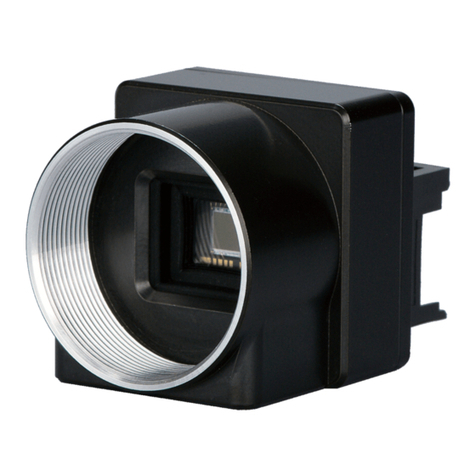
Toshiba teli
Toshiba teli BU Series User manual
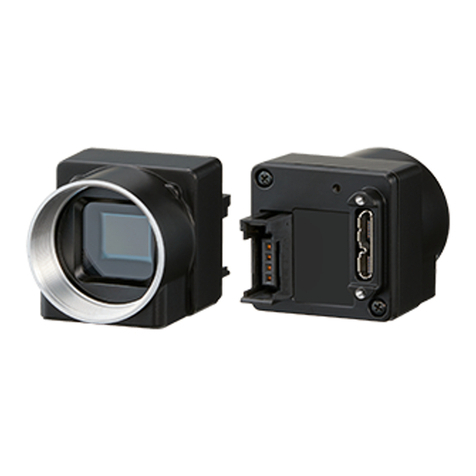
Toshiba teli
Toshiba teli BU132M User manual
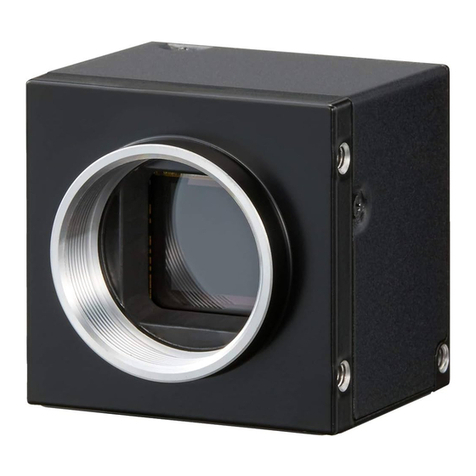
Toshiba teli
Toshiba teli DU Series User manual
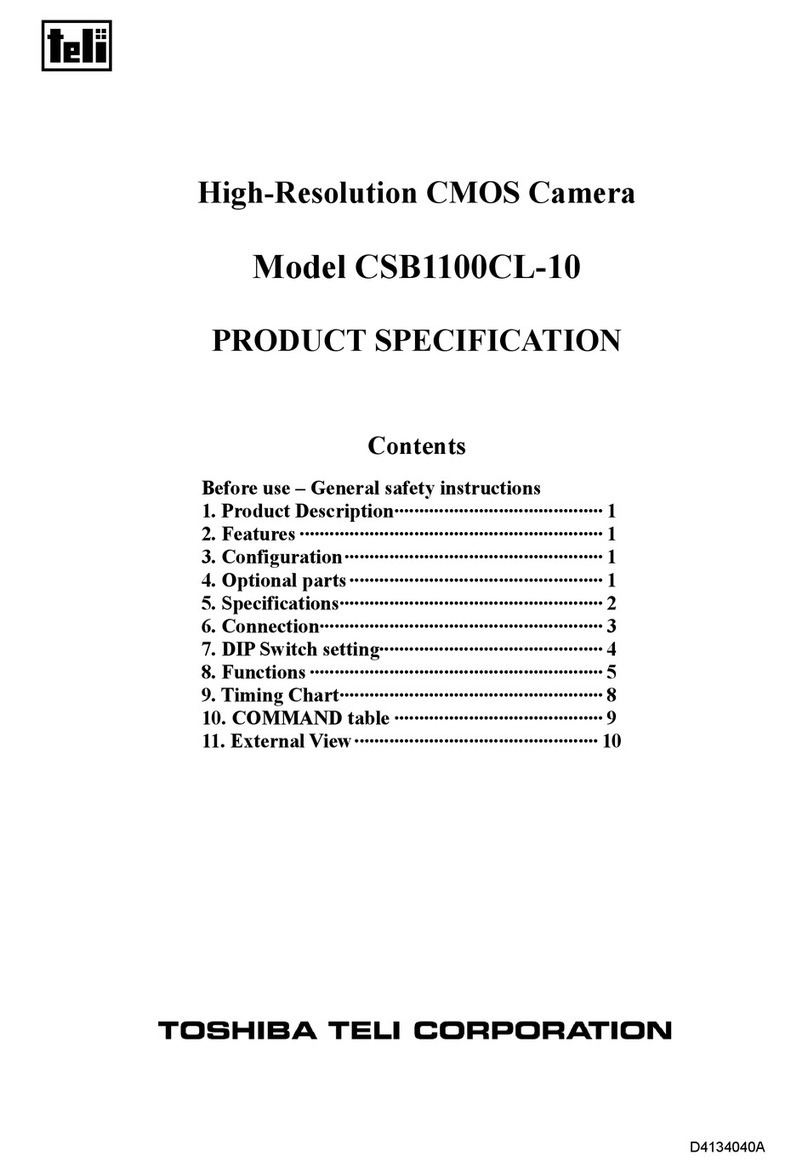
Toshiba teli
Toshiba teli CSB1100CL-10 User manual
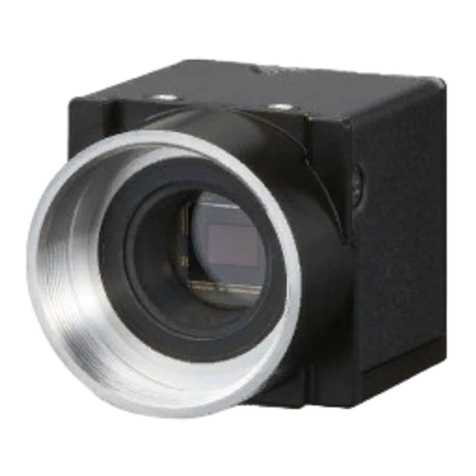
Toshiba teli
Toshiba teli BC Series User manual

Toshiba teli
Toshiba teli BU Series User manual
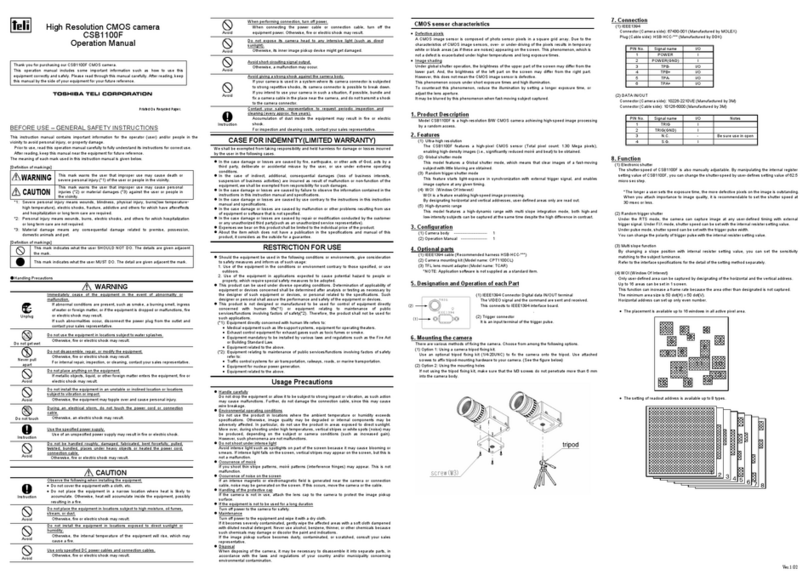
Toshiba teli
Toshiba teli CSB1100F User manual

Toshiba teli
Toshiba teli BU Series User manual
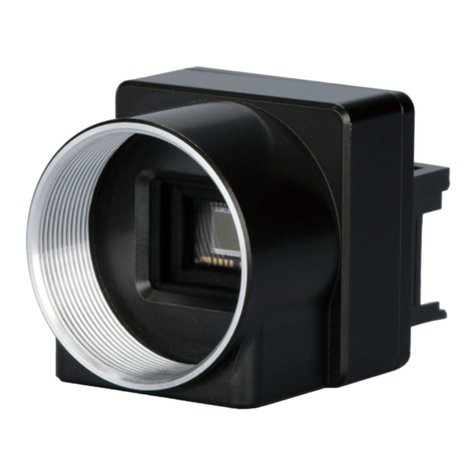
Toshiba teli
Toshiba teli BU302M-ES User manual

Toshiba teli
Toshiba teli BU406M User manual


